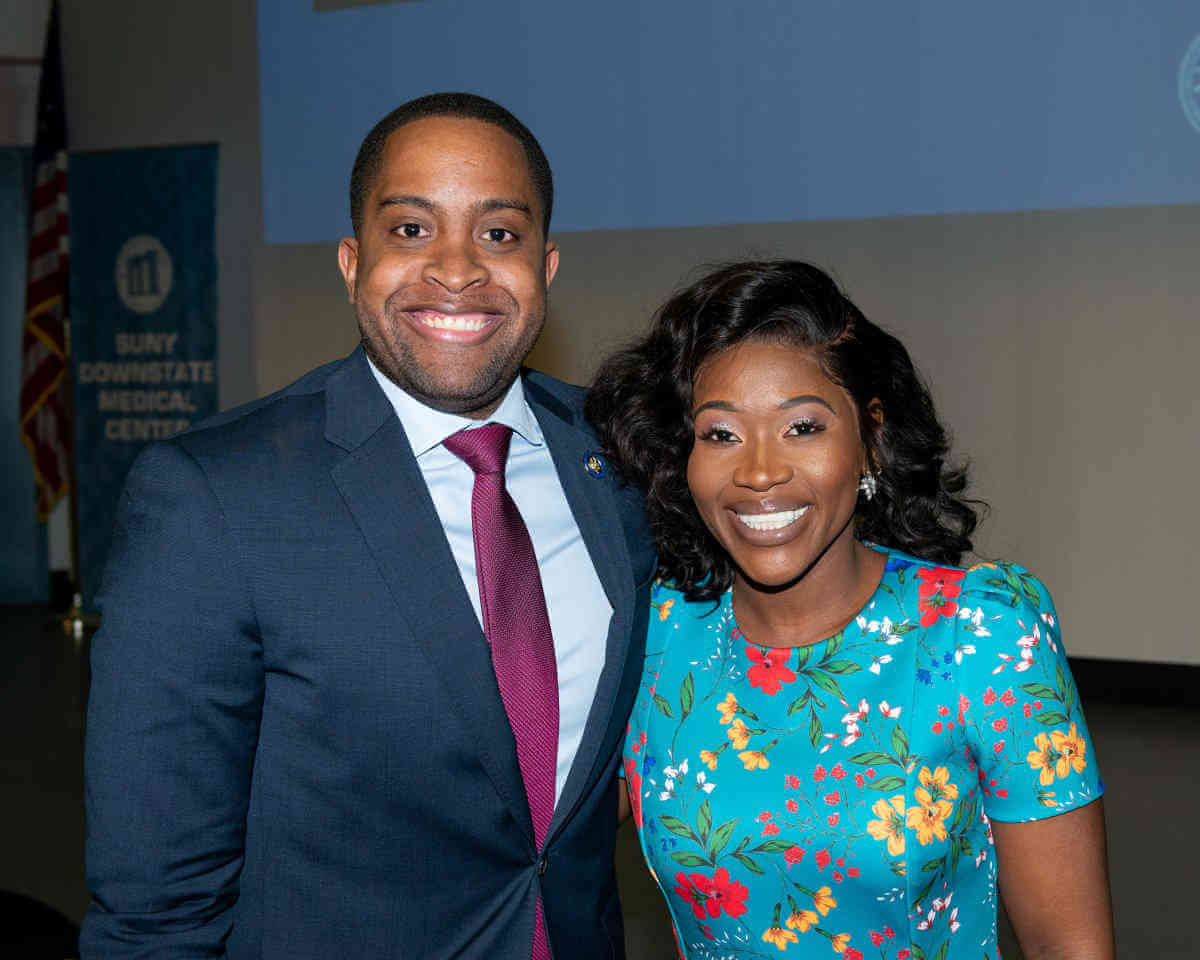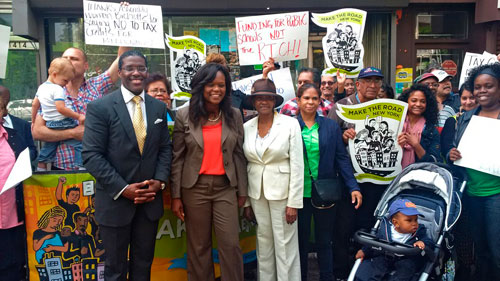Brooklyn Sen. Zellnor Y. Myrie on Tuesday welcomed Gov. Andrew M. Cuomo’s announcement that New York State will spend as much as $60 million to ensure that every New Yorker is counted in the upcoming 2020 US Census.
“After long delay and consistent calls from hard-to-count communities, we are pleased to see that the governor’s office has made the census funding available for our communities and plans to leverage state agencies to conduct census outreach” said Myrie, who represents the 20th Senatorial District in Brooklyn. “This is much needed and overdue.
“But, as always, the devil is in the details,” he added. “It is still unclear to us whether historically under-counted communities, like Brooklyn, will receive a proportion of the funding that is commensurate with their unique need and, whether that funding will be dispersed as expeditiously as possible given how close the census is.
“We thank the community groups who’ve been advocating for this funding for months, and hope that as many of them as possible will be included in the process going forward,” the senator continued. “This is an important step forward, and we will continue to engage with the governor’s office to ensure that our community gets the resources it needs for the census.”
Myrie, who has held numerous census information sessions throughout his district, noted that, in September, he penned a joint letter to the governor’s office with 33 Brooklyn elected officials calling for the release of adequate census funding to Brooklyn, where 80 percent of residents live in what is considered to be hard-to-count neighborhoods.
Last month, Myrie launched a census Complete Count Committee with Assembly Member Diana C. Richardson and more than 20 community-based organizations in an effort to expand awareness and engagement in the census.
Earlier this month, Myrie called on the governor to release the state’s census funds without further delay.
In his announcement on Tuesday, Cuomo said the State will leverage resources across dozens of agencies, public authorities, the City University of New York (CUNY) and State University of New York (SUNY) that regularly interact with millions of New Yorkers.
Together, he said they will launch a wide-reaching campaign valued at up to $40 million from existing resources that will inform the public about the Census and support efforts to encourage residents to complete the questionnaire.
Additionally, $20 million from the Fiscal Year 2020 Budget is being made available to support targeted efforts in hard to reach communities, Cuomo said.
“Counting every New Yorker in the 2020 Census is critical to ensuring we are accurately represented in Congress and receive the federal funding we deserve,” he said. “While the federal government has thrown up road block after road block – spreading fear among immigrant communities in the process – in New York, we will break through and make sure that even our most difficult to reach communities are counted.”
Cuomo said the State’s support for the Census count builds on findings and recommendations released in October by the New York State Complete Count Commission, which held 10 public hearings and reviewed hundreds of comments, expert testimonies and in-depth analysis of previous census results.
The governor noted that the Commission found that the 2020 Census faces unprecedented challenges.
For the first time, he said the Census will be conducted primarily online, adding that, while the Trump Administration failed in its effort to include a citizenship question on the Census, “its attempt to do so spread fear among immigrant communities.”
“The Trump administration and Congress have also failed to fully fund Census operations in the years leading up to 2020,” Cuomo said. “As a result of that failure, the Census Bureau has been forced to cut costs, shifting responsibility for on-the-ground work necessary to drive participation in the 2020 Census from the federal government to state and local partners.”
He said the number of US Census Bureau field offices in New York has dropped from 35 in 2010 to 21 in 2020.
To break through these barriers, the governor said CUNY, SUNY and dozens of other State agencies and authorities will use their resources and ongoing contact with the public to develop and deploy an up to $40 million from statewide Census awareness campaign using existing resources.
He said these state entities, including the Departments of Labor, Motor Vehicles, Agriculture and Markets; the offices of Mental Health, Alcohol and Substance Abuse, and People with Developmental Disabilities; Empire State Development; and the Division of Veterans Affairs will conduct outreach and provide Census-related information across their millions of contacts with the public.
The governor said the Department of Labor, which reaches more than 9 million workers, 550,000 businesses and serves more than 500,000 New Yorkers directly, will open all 96 of its Career Centers as census assistance centers where members of the public can securely complete their 2020 Census questionnaire online.
Cuomo said Career Centers will also display Census information on TV monitors in the waiting room, posters and handouts in multiple languages.
The Department of Labor has also already promoted Census Bureau jobs at more than 100 jobs fairs and other recruiting events it hosts in every region of the state.
Cuomo said SUNY’s 64 campuses and CUNY 25 campuses across New York City’s five boroughs can serve as nodes that combine outreach efforts with resources.
He said the two university systems, including community colleges, will also collaborate with the State to ensure their nearly 700,000 students are counted.
Additionally, the said the Empire State College will open dozens of computer labs across the state for members of the public to use to complete the Census.
The governor said these efforts will build on action already taken directly by the State that added over 225,000 addresses to the Census Bureau’s Master Address file.
























